If you are looking for a lucrative and sustainable business opportunity in the poultry sector, consider 45-day broiler chicken farming. Broiler chickens are fast-growing birds that are raised for meat production. They can reach market weight in as little as 45 days, which means you can have multiple cycles of production in a year. In this article, we will provide you with a comprehensive guide on how to start and run a successful 45-day chicken-rearing business.
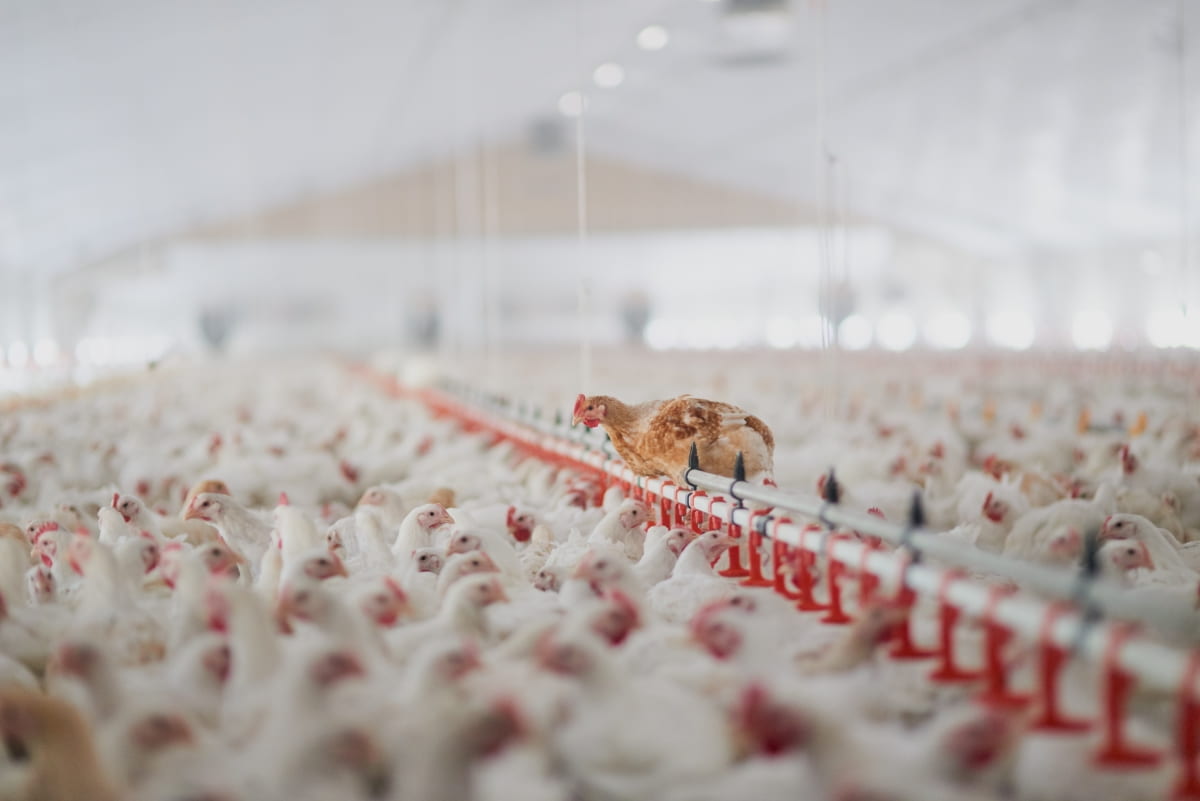
45 Days Chicken Business Plan
Vision and Purpose of the 45-Day Broiler Chicken Farming Business
The 45-day broiler chicken farming business is a lucrative and sustainable venture that aims to produce high-quality poultry meat in a short and efficient cycle. The purpose of this business is to meet the growing demand to chicken products in the local and global markets while ensuring the welfare and health of the birds. The 45-day broiler chicken farming business also strives to adopt eco-friendly and innovative practices that reduce the environmental impact and enhance the productivity of the operation.
Identifying Demand and Opportunities in the Poultry Meat Sector
The poultry meat sector is one of the fastest-growing and most profitable segments of the livestock industry. According to FAO, global poultry meat production increased by 4.6% in 2019, reaching 131.8 million tonnes. The main drivers of this growth are the rising population, income, urbanization, and consumer preferences for chicken products. The 45-day broiler chicken farming business can capitalize on these trends by offering fresh, affordable, and quality chicken meat to various market segments, such as households, restaurants, hotels, supermarkets, and exporters.
Structuring a Profitable 45-Day Chicken Rearing Operation
The 45-day chicken-rearing operation is based on a simple and effective model that involves raising broiler chickens from day-old chicks to slaughter-ready birds in 45 days. The operation requires a suitable housing system that provides adequate space, ventilation, lighting, heating, and cooling for the chickens. The operation also requires a reliable source of day-old chicks, feed, water, vaccines, and veterinary services. The operation can be scaled up or down depending on the market demand and available resources.
In case you missed it: Pasture-Based Free-Range Chicken Farming: How to Implement for Improving Welfare and Quality
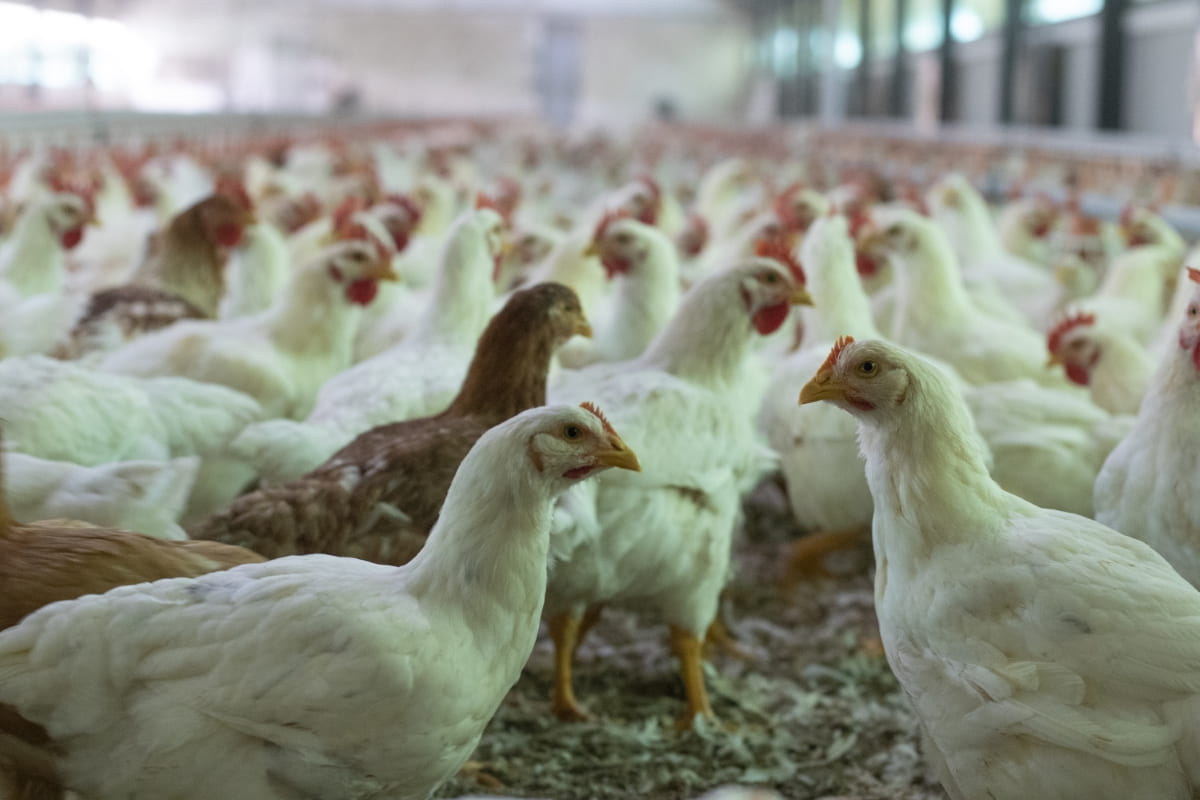
Analysis of Key Players in the Short-Cycle Broiler Industry
The short-cycle broiler industry is characterized by a high level of competition and innovation among the key players. The key players include hatcheries, feed manufacturers, processors, distributors, retailers, and consumers. The hatcheries supply day-old chicks to the farmers at a competitive price and quality. The feed manufacturers provide balanced and nutritious feed for the chickens at different stages of growth.
The processors slaughter, dress, package, and label the chicken products according to the standards and regulations. The distributors transport and deliver the chicken products to various market outlets. The retailers sell the chicken products to the final consumers at an attractive price and quality. Consumers demand fresh, safe, and tasty chicken products that meet their preferences and needs.
Defining the Ideal Customer Base for Broiler Chicken Products
The ideal customer base for broiler chicken products consists of diverse and loyal customers who value quality, convenience, affordability, and variety in their chicken consumption. The ideal customers include individuals, families, students, workers, tourists, and health-conscious people who consume chicken products regularly or occasionally.
The ideal customers also include restaurants, hotels, caterers, supermarkets, exporters, and other businesses that use chicken products as ingredients or menu items. The ideal customers are located in urban or rural areas with easy access to transportation and communication facilities.
Innovative Approaches to Market 45-Day Chickens
The 45-day chicken farming business can use various innovative approaches to market its products and gain a competitive edge in the industry. Some of these approaches are:
- Creating brand identity and image that reflects the quality, freshness, and uniqueness of the 45-day chickens.
- Developing a website and social media platforms that showcase the features, benefits, testimonials, and stories of the 45-day chickens.
- Offering discounts, coupons, loyalty programs, referrals, and free samples to attract customers and retain existing ones.
- Participating in trade fairs, exhibitions, festivals, competitions, and other events that promote the 45-day chickens.
- Establishing partnerships and collaborations with other stakeholders in the industry that can enhance the distribution and visibility of the 45-day chickens.
In case you missed it: The Genetic Revolution Enhancing Chicken Farming Through Genetics
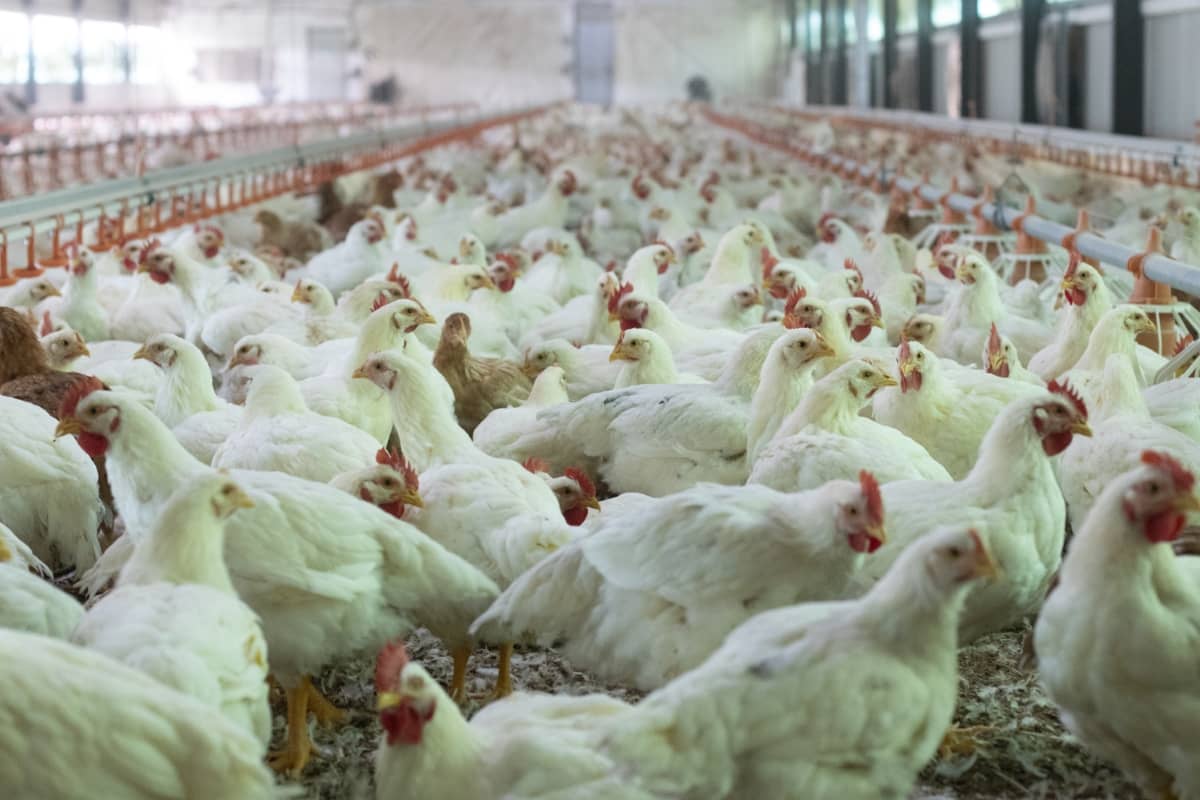
Best 8 Chicken Breeds for 45 days Chicken Business
- Cobb 500: This is the most popular and widely used breed in the world. It has a high feed conversion ratio, good meat quality, and excellent disease resistance.
- Ross 308: This is another popular breed that has a high growth rate, good carcass yield, and low mortality rate.
- Hubbard Classic: This breed is known for its adaptability to different climates and environments. It has good feed efficiency, uniform growth, and high livability.
- Arbor Acres Plus: This breed is suitable for hot and humid conditions. It has a high growth rate, good feed conversion ratio, and low mortality rate.
- Hybro PG: This breed is ideal for low-density and free-range systems. It has a high meat yield, good feed efficiency, and low environmental impact.
- Aviagen Anak: This breed is designed for tropical and subtropical regions. It has a high growth rate, good feed conversion ratio, and high disease resistance.
- Sasso T44: This breed is a slow-growing alternative that has high meat quality, good flavor, and low fat content.
- Kuroiler: This breed is a dual-purpose hybrid that can produce both eggs and meat. It has a high survival rate, good feed efficiency, and high adaptability.
Daily Management Practices for Efficient Chicken Rearing
Provide clean and fresh water at all times. Water is essential for hydration, digestion, and temperature regulation of your chickens. You should change the water at least twice a day and clean the drinkers regularly. Provide adequate and balanced feed according to the age and weight of your chickens. Feed is the main source of energy, protein, vitamins, minerals, and nutrients for your chickens.
You should follow the recommended feeding schedule and adjust the feed intake according to the growth performance of your chickens. Maintain proper temperature and ventilation in the chicken house. Temperature and ventilation affect the comfort, health, and productivity of your chickens. You monitor the temperature, humidity levels in the chicken house and use fans, heaters, or coolers as needed.
In case you missed it: The Genetic Revolution Enhancing Chicken Farming Through Genetics
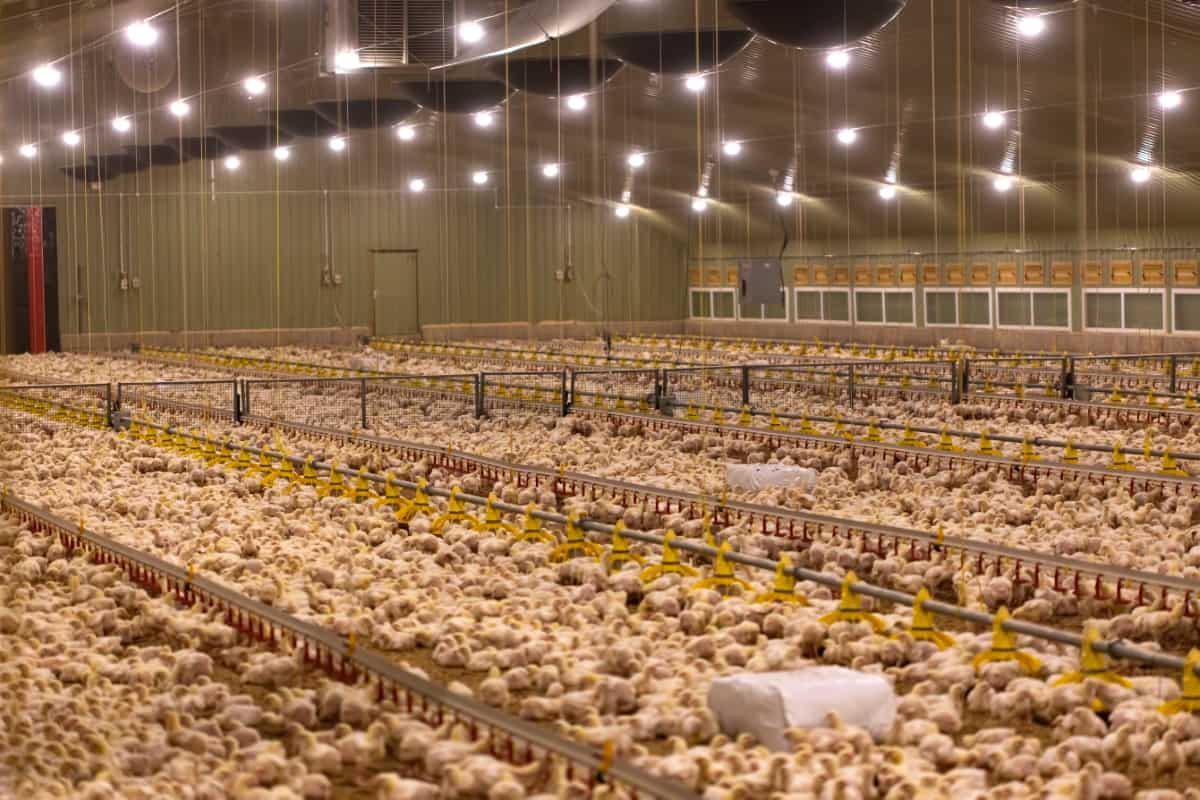
Keep the chicken house clean and sanitary. Hygiene is crucial for preventing diseases and infections in your chickens. You should remove the litter regularly, disinfect the equipment and utensils, and control pests and rodents. Observe your chickens closely and check for any signs of illness or injury. Early detection, treatment of diseases and injuries can save your chickens’ lives and reduce your losses. You should look for any abnormal behaviors, appearances, or sounds in your chickens and consult a veterinarian if needed.
Feed and Nutrition Management for Growth in 45-Day Broiler Chickens
Choose high-quality feed that meets nutritional requirements of your chickens. The feed should contain adequate amounts of energy, protein, amino acids, vitamins, minerals, and other additives that enhance the growth and health of your chickens. It would help if you avoided feed that is moldy, spoiled, or contaminated with toxins or pathogens.
Provide different types of feed according to the different stages of growth of your chickens. The feed should match the physiological needs of your chickens at each stage of growth. Generally, there are three types of feed for broiler chickens: starter feed (from day 1 to day 10), grower feed (from day 11 to day 24), and finisher feed (from day 25 to day 45). Use proper feeding methods that optimize the feed intake and utilization of your chickens. The feeding methods include:
- The type of feeder (trough or pan).
- The number of feeders (one per 50 birds).
- The location of the feeder (near a water source).
- The frequency of feeding (ad libitum or restricted).
- The duration of feeding (day or night).
Monitor the feed consumption and body weight of your chickens regularly. The feed consumption and body weight are indicators of the growth performance and efficiency of your chickens. You should record the feed consumption and body weight of your chickens daily or weekly and compare them with the standard values.
Ensuring the Well-Being of Chickens in A 45-Day Cycle
To ensure the welfare and well-being of your chickens, it is crucial to provide them with adequate space and comfort. This includes providing a minimum of 0.1 square meters of floor space, litter material, bedding, and lighting. Protect your chickens from predators and thieves by securing their houses with fences, locks, alarms, or guards. Keep them away from wild animals, dogs, cats, or birds that may harm or steal them.
Handle your chickens gently and humanely, using proper equipment and techniques for catching, holding, carrying, or loading them. Slaughter your chickens in a humane way, using approved methods of stunning (electricity or gas) and killing (bleeding or cervical dislocation) to minimize their suffering and preserve their meat quality. This will help ensure the chickens’ safety and well-being during their 45-day chicken farming business.
Revenue, Costs, and Profitability Analysis for 45-Day Cycles
Revenue, costs, and profitability are the main financial aspects of your 45-day chicken farming business. To evaluate the performance and viability of your business, you should conduct a revenue, costs, and profitability analysis for each 45-day cycle. Calculate the revenue from selling your chickens. The revenue is the amount of money you earn from selling your chickens to the market or customers. The revenue depends on the number of chickens you sell, the weight of each chicken, and the price per kilogram of chicken meat.
Calculate the costs of producing your chickens. The costs are the amount of money you spend on producing your chickens. The costs include fixed costs (such as land rent, building depreciation, and equipment maintenance) and variable costs (such as feed, water, electricity, labor, and medication).
In case you missed it: Raising Kadaknath Chickens (Black Chicken) in India: Check How this Guide Helps Profitable Kadaknath Poultry Farming from Scratch
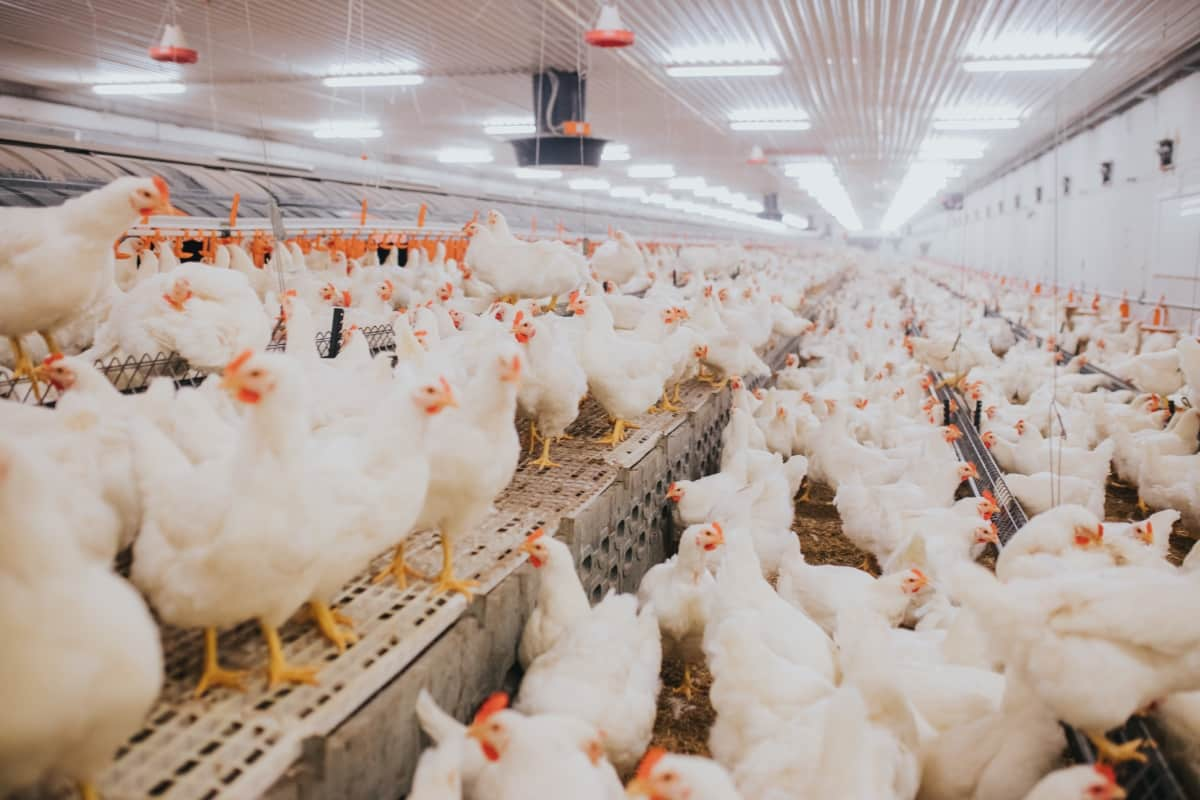
Calculate the profitability of your business. Profitability is the difference between the revenue and the costs of your business. The profitability indicates how much money you make or lose from your business. The profitability can as a gross margin (revenue minus variable costs), a net margin (revenue minus total costs), or a return on investment (profitability divided by total investment).
Identifying and Mitigating Potential Risks in Broiler Farming
Broiler farming is a risky business with numerous uncertainties and challenges. To mitigate these risks, it is crucial to identify and mitigate them. Disease outbreaks are:
- A common and serious risk.
- Causing high mortality rates.
- Low growth rates.
- Poor meat quality.
- Low profitability.
To prevent and control diseases, follow biosecurity measures, monitor health status, and treat sick birds. Market fluctuations can affect the demand and supply of chicken meat, affecting the business’s price and profitability. To cope with these fluctuations, diversify market channels, adjust production volume, and hedge price risk. Environmental disasters are rare but catastrophic risks, causing damage or destruction to chicken houses, equipment, feed, water, or birds. To prepare for these disasters, insure assets, have contingency plans, and seek emergency assistance from government agencies and NGOs.
Eco-Friendly Practices in 45-Day Broiler Chicken Farming Business
Renewable energy sources of solar panels, wind turbines, and biogas generators can reduce costs and carbon footprints on farms. Waste management systems like composting and vermiculture can convert chicken manure and litter into organic fertilizer, biogas, or electricity, improving soil quality and income. Adhering to animal welfare standards, such as providing adequate space, ventilation, lighting, bedding, feed, and water, can improve chicken health, productivity, and quality of life.
Organic or natural feed ingredients like corn, soybean meal, fish meal, or alfalfa can prevent antibiotic resistance, hormone imbalance, or allergic reactions. Biosecurity measures like disinfecting farm premises, isolating sick or injured chickens, and vaccination against common diseases can prevent the spread of infections, parasites, or pests among chickens and protect them from external threats.
Legal and Regulatory Compliance for 45-Day Chicken Rearing
To raise broiler chickens for a 45-day cycle, the farm must obtain various permits and licenses from the government and other authorities. These include a poultry farm registration certificate from the Bureau of Animal Industry (BAI), a sanitary permit from the local health office, an environmental certificate from Department of Environment and Natural Resources , a business permit from the local government unit (LGU), and a certificate of accreditation from the National Meat Inspection Service (NMIS).
These certificates ensure the farm meets minimum standards for animal health, welfare, biosecurity, and sanitary requirements for poultry production. Additionally, a business permit from the local government unit grants the farm legal authority to operate as a business entity and pay taxes and fees.
Advanced Techniques in 45-Day Chicken Rearing
- Adopt advanced techniques such as using hybrid or improved breeds of broiler chickens with high feed conversion ratios, fast growth rates, high meat yield, and good disease resistance.
- Implement a multilayer cage system to accommodate more birds per unit area, reduce mortality rates, prevent cannibalism, and facilitate feeding, watering, and cleaning.
- Provide a balanced and nutritious diet to the broilers, ensuring that they are fresh, clean, and free from contaminants or adulterants.
- Maintain optimal temperature, humidity levels in the broiler house to prevent heat or cold stress.
- Implement biosecurity measures to prevent the spread of diseases among the flock, including disinfecting the broiler house and equipment, isolating sick or injured birds, vaccinating against common diseases, controlling rodents and insects, and limiting visitors or workers.
45-day Broiler Chicken Farming Techniques
Broiler chicken farming is a profitable business that involves raising chickens for meat production in a short period, typically 45 days. To successfully raise broiler chickens for a 45-day cycle, it is essential to select healthy, quality chicks from reputable hatcheries or suppliers, vaccinate them against common diseases, provide adequate brooding facilities for the first two weeks, and provide sufficient feed and water throughout the cycle.
Litter quality and hygiene in the broiler house should be managed using absorbent materials like rice hulls, wood shavings, or sawdust and regularly changed or replenished to prevent odors, flies, and diseases. Regular monitoring and recording of the growth and performance of the broilers can help identify problems, adjust management practices, and evaluate profitability. By following these techniques, broiler chicken farming can be a profitable and efficient business.
In case you missed it: How to Start Free-range Chicken Farming: A Step-By-Step Guide, Advantages, and Disadvantages
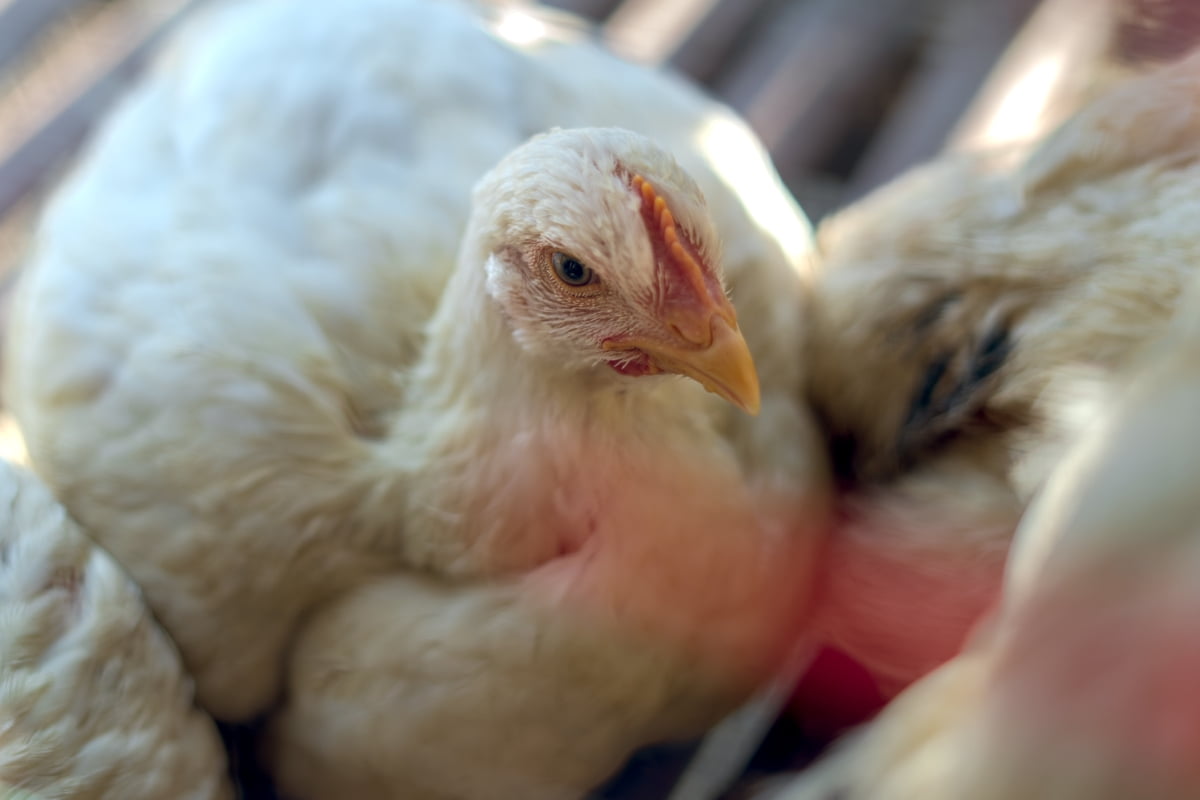
Conclusion
The 45-day chicken business plan involves balancing revenue, costs, and profitability. Strategic management of production and marketing ensures a sustainable venture. Monitoring expenses and optimizing processes are crucial for maximizing profits in this time frame and promoting success in the dynamic poultry industry.
- Types of Pesticides Used in Agriculture: A Beginner’s Guide
- Economical Aquaculture: A Guide to Low-Budget Fish Farming
- 15 Common Planting Errors That Can Doom Your Fruit Trees
- How to Make Houseplants Bushy: Effective Tips and Ideas
- Innovative Strategies for Boosting Coconut Pollination and Yield
- Pollination Strategies for Maximum Pumpkin Yield
- The Complete Guide to Chicken Fattening: Strategies for Maximum Growth
- Natural Solutions for Tulip Problems: 100% Effective Remedies for Leaf and Bulb-Related Issues
- Revolutionizing Citrus Preservation: Towards a Healthier, Greener Future
- Natural Solutions for Peony Leaf and Flower Problems: 100% Effective Remedies
- Maximizing Profits with Avocado Contract Farming in India: A Comprehensive Guide
- Natural Solutions for Hydrangea Problems: 100% Effective Remedies for Leaf and Flowers
- The Ultimate Guide to Choosing the Perfect Foliage Friend: Bringing Life Indoors
- From Sunlight to Sustainability: 15 Ways to Use Solar Technology in Agriculture
- The Ultimate Guide to Dong Tao Chicken: Exploring from History to Raising
- The Eco-Friendly Makeover: How to Convert Your Unused Swimming Pool into a Fish Pond
- Mastering the Art of Delaware Chicken Farming: Essentials for Healthy Backyard Flocks
- 20 Best Homemade Fertilizers for Money Plant: DIY Recipes and Application Methods
- How to Craft a Comprehensive Free-Range Chicken Farming Business Plan
- Brighten Your Flock: Raising Easter Egger Chickens for Beauty and Bounty
- How to Optimize Your Poultry Egg Farm Business Plan with These Strategies
- Subsidy for Spirulina Cultivation: How Indian Government Schemes Encouraging Spirulina Farmers
- Ultimate Guide to Raising Dominique Chickens: Breeding, Feeding, Egg-Production, and Care
- Mastering the Art of Raising Jersey Giant Chickens: Care, Feeding, and More
- Ultimate Guide to Raising Legbar Chickens: Breeding, Farming Practices, Diet, Egg-Production
- How to Raise Welsummer Chickens: A Comprehensive Guide for Beginners
- How to Protect Indoor Plants in Winter: A Comprehensive Guide
- Ultimate Guide to Grow Bag Gardening: Tips, Tricks, and Planting Ideas for Urban Gardeners
- Guide to Lotus Cultivation: How to Propagate, Plant, Grow, Care, Cost, and Profit
- Agriculture Drone Subsidy Scheme: Government Kisan Subsidy, License, and How to Apply Online
- Ultimate Guide to Raising Araucana Chickens: Breed Profile, Farming Economics, Diet, and Care
- Bringing Hydroponics to Classroom: Importance, Benefits of Learning for School Students
- Ultimate Guide to Raising Polish Chickens: Breed Profile, Farming Economics, Diet, and Care
- Ultimate Guide to Raising Australorp Chickens: Profile, Farming Economics, Egg Production, Diet, and Care
- Silkie Chicken Farming: Raising Practices, Varieties, Egg Production, Diet, and Care
- Sussex Chicken Farming: Raising Practices, Varieties, Egg Production, Diet and Care
Thank you. loved your article. It was really helpful for my business.
Wish to see more in the coming days.